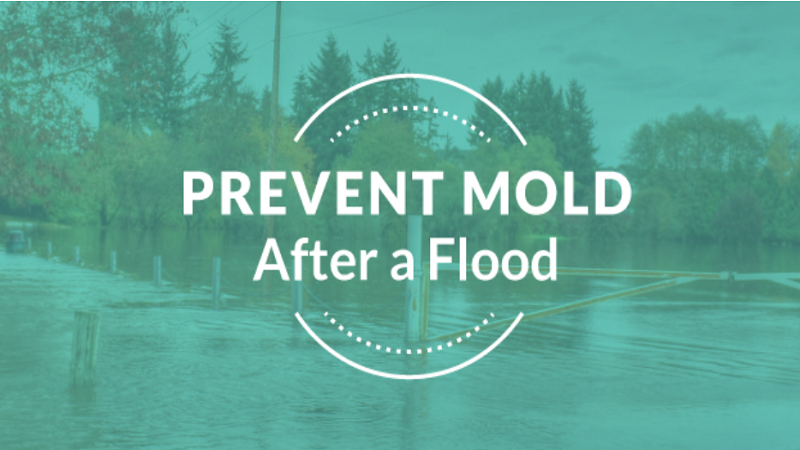Flooding in Texas is an all-too-common challenge, especially during hurricane season. As floodwaters recede, another issue swiftly follows—mold growth. Mold Prevention After Flooding thrives in moist environments and can begin to grow within just 24–48 hours after a flood, posing significant health risks and extensive property damage. Preventing mold growth is essential to restoring a safe and habitable environment. This comprehensive guide will cover effective strategies for preventing mold after flooding, designed specifically for Texas residents.
Understanding the Dangers of Mold Growth After Flooding
Flooding not only brings water damage but also introduces contaminants, such as bacteria and sewage. When combined with high humidity, these elements create the ideal environment for mold. Mold Prevention After Flooding spores spread easily, and prolonged exposure can lead to respiratory issues, allergies, and even asthma. Here’s why Texas residents must take swift action against mold growth following a flood.
- Health Risks: Mold can cause respiratory problems, skin irritation, and worsened allergy symptoms. Certain types of mold, such as black mold, produce mycotoxins, which can be toxic.
- Structural Damage: Mold can weaken walls, floors, and ceilings by feeding on materials such as wood and drywall, leading to long-term structural issues.
- Decreased Property Value: Homes with visible mold problems or past mold infestations are often harder to sell, resulting in lower property values.
Step-by-Step Guide to Mold Prevention After Flooding
Prioritize Safety and Protective Gear
Flooding introduces various contaminants into your home. Before you begin the cleanup, wear appropriate protective gear to prevent exposure to mold spores and bacteria.
- Wear Respiratory Protection: An N95 respirator mask is recommended to filter out small particles, including mold spores.
- Use Gloves and Protective Clothing: Mold can irritate the skin, so it’s best to wear waterproof gloves, long sleeves, and long pants.
- Ventilate the Area: Open windows and doors to improve air circulation, but avoid using fans, as they can spread mold spores to unaffected areas.
Remove Standing Water Immediately
Standing water is one of the primary causes of mold growth, so it’s critical to remove it as quickly as possible. Here’s how to do it effectively:
- Use a Wet-Dry Vacuum: These machines are specifically designed to handle water and are effective for large amounts of standing water.
- Mop Up Excess Moisture: For smaller pools of water, use mops and towels to absorb any lingering moisture.
- Dispose of Wastewater Properly: Ensure that any contaminated water is disposed of safely, as it may contain bacteria or other harmful agents.
Remove Saturated Materials
Flooded areas in Texas homes often contain materials that absorb water quickly, such as carpeting, drywall, and insulation. Unfortunately, these materials become prime locations for mold.
- Tear Out Carpeting and Rugs: Mold quickly colonizes porous materials like carpeting, so remove and dispose of them if they were soaked.
- Cut Out Waterlogged Drywall: Mold can grow behind drywall without being visible. Cut away at least 12 inches above the waterline to ensure all contaminated material is removed.
- Inspect Insulation: Insulation, especially fiberglass or cellulose, should be replaced if exposed to floodwaters as it retains moisture.
Dry and Dehumidify the Area Thoroughly
Once all wet materials are removed, drying out your home is essential to prevent mold growth. The quicker the drying process, the lower the risk of mold.
- Use Dehumidifiers: Dehumidifiers pull moisture from the air, making it harder for mold to survive. Place dehumidifiers in each room affected by flooding.
- Set Up Fans: While not recommended during initial cleanup, fans can help once mold spores have been removed. Use them in conjunction with dehumidifiers to accelerate the drying process.
- Open Windows and Doors: If outdoor humidity levels are low, ventilate your home by opening windows and doors to improve airflow.
Clean and Disinfect All Surfaces
After drying, it’s crucial to disinfect surfaces that came into contact with floodwater. Mold spores can be resilient, so thorough cleaning is essential.
- Use Mold-Killing Cleaners: Clean all hard surfaces with mold-killing agents, such as bleach or commercially available mold removal products. Ensure the cleaner penetrates all nooks and crevices.
- Disinfect Walls, Floors, and Ceilings: Pay special attention to walls and flooring, especially any areas that were previously covered by soaked materials.
- Scrub Porous Items: Items like wooden furniture or fabrics may be salvageable if they are cleaned and dried quickly. Use anti-microbial solutions to eliminate mold spores.
Monitor Humidity Levels Regularly
Humidity plays a significant role in mold prevention, as mold thrives in humid environments. Texas residents should aim to maintain indoor humidity levels between 30-50% to deter mold growth.
- Use a Hygrometer: This device measures indoor humidity, giving you the data needed to maintain safe levels.
- Keep Air Conditioning Running: Air conditioning units not only cool the air but also reduce humidity, making them useful during the drying process.
- Monitor for Condensation: If you notice condensation on windows or walls, it could be a sign that humidity is too high, making the environment ideal for mold growth.
Inspect for Mold Growth Regularly
After a flood, mold can remain dormant but reappear under favorable conditions. Regular inspections help catch and address any growth early.
- Check Common Mold Areas: Focus on areas like basements, attics, and crawl spaces where moisture can accumulate.
- Look for Musty Odors: Mold often emits a strong, musty smell, even if it’s not visible. Trust your sense of smell during inspections.
- Use Mold Testing Kits: For peace of mind, mold testing kits can help determine if mold is present in hidden spaces.
Consider Professional Mold Remediation Services
Sometimes, despite our best efforts, mold can be persistent and require professional intervention. For extensive flooding or severe mold cases, professional remediation ensures safety and thoroughness.
- Schedule a Mold Assessment: A mold inspection can identify hidden mold growth that may not be visible.
- Utilize Professional Equipment: Experts use high-grade equipment like HEPA filters and industrial dehumidifiers to eliminate mold effectively.
Ensure Proper Disposal of Moldy Materials: Professionals have the expertise to handle moldy items in compliance with safety guidelines, reducing health risks
Preparing Your Texas Home for Future Floods
Texas residents should also consider preventive measures for future floods. Some strategies include:
- Seal Foundation Cracks: Prevent water from seeping into your basement or crawl spaces by sealing any cracks in your foundation.
- Install a Sump Pump: A sump pump can prevent water from accumulating during heavy rains.
- Elevate Electrical Appliances: Keep appliances and electrical outlets above potential flood levels to minimize damage.
Conclusion
Mold prevention after flooding is essential for protecting both your health and your home. By acting quickly, removing water, and keeping humidity in check, Texas residents can avoid mold growth following a flood. If you encounter extensive mold, professional assistance can ensure thorough and safe remediation. See More











